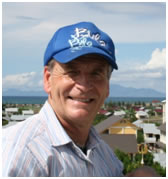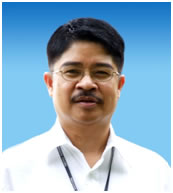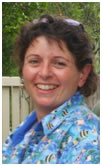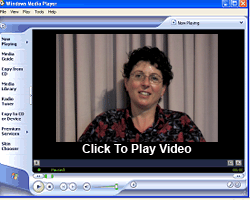About this subject
Welcome
Welcome to EMG309 Humanitarian Relief. This subject will provide a broad overview of what to expect when working in the humanitarian aid sector. It is designed for students of Emergency Management and students from any other disciplines who may be considering serving in a humanitarian capacity. Topics covered include making personal preparations, how to define socially responsible engagement, an overview of the international relief system, and a background to what is a complex emergency.
Objectives
Upon successful completion of this subject, students should be able to:
- summarise what is a complex emergency
- explain the principles of humanitarian practice
- define what is meant by socially responsible engagement
- to make effective personal preparations for departure
- describe the major aid organisations
- outline the skills they bring to the sector
The Authors
|
Chris Piper Chris is a multi-skilled humanitarian and community development practitioner with more than 30 years experience in the field. He has experience in the complementary sectors of disaster risk management, education and training, as well as research. His humanitarian experience spans a number of countries in the Asian-Pacific, Eastern and Southern Africa, and Western and Southern Europe regions. His involvement includes Save the Children UK in Bangladesh and with World Vision in Somalia and Cambodia. Chris holds a Master in International and Community Development as well as other postgraduate qualifications in both Development Studies and Education. Since 1992 Chris has run his own consultancy, TorqAid – http://www.torqaid.com, and from 1999-2007 he was a part-time lecturer with Deakin University in their off-campus Master in International & Community Development program. He has completed consultancy work in natural disasters and complex emergencies in both Australia and overseas, including practical involvement in the 2011 Australian floods, the 2009 Australian bushfires, the 2009 Myanmar/Burma Cyclone Nargis, the 2004 Indian Ocean tsunami, the 1998 PNG Aitape tsunami, and the 1997 Papua and New Guinea drought. With regards to complex emergencies, Chris was involved in post-conflict humanitarian evaluation work in Northern Afghanistan (2002) and Albanian crisis centre management, and later Balkan post-conflict evaluation in 1999/2000. Earlier on in his career he was involved in the 1992 Cambodian re-integration program, various Mozambique relief/recovery initiatives (1988-90), and refugee/food security work in Somalia, Ethiopia and Sudan during the first part of the 1980’s. To access more information visit: http://www.torqaid.com/images/stories/CPLatestPublications.pdf Email Chris at pipercm@iprimus.com.au |
|
Sanny R. Jegillos Until 1992, Sanny managed programs related to emergency response and promoting livelihood recovery in communities affected by catastrophic events in the Philippines, following major cyclones, earthquake and the Mt. Pinatubo volcanic eruption. In the early 1990’s Sanny led partners from Bangladesh, India, Nepal, Sri Lanka, Pakistan and the Philippines in codifying community based approaches to disaster management and conceptualised the first CBDRM regional training/s and the introduction of the CBDRM approach to civil society organisations and governments in the Asia-Pacific Region. Immediately following the Indian Ocean tsunami of 2004, Sanny provided advice in needs assessment and planning for a regional program and national disaster reduction plans and recovery for Sri Lanka, Thailand, India, Maldives and Indonesia. He previously advised and consulted on disaster risk management and recovery for IFRC in the Southeast Asian region, UNDP in Bangladesh, Yemen, Lao PDR and China, with UNICEF in Vietnam, WFP in Cambodia and UNCRD in Japan, among others. He has also undertaken similar work for the Asian Development Bank in Afghanistan, European Commission and various other donor and international organisations. Sanny is currently involved in leading a regional program effort to provide strategic guidance on disaster risk reduction, post crisis recovery and women’s role in peace building for countries in the Asia-Pacific region. Sanny contributes to the design of the capacity development in risk reduction, policy development, integration of disaster risk reduction into development, and facilitating regional cross learning and developing alliances with regional partners. Email Sanny at sannyjegillos@yahoo.com |
|
Val Ingham Val joined Charles Sturt University in 2005 and she lectures in Emergency Management. Her PhD examined the somatic and aesthetic awareness of incident controllers in time pressured decision making. She is a founding member of the Bangladesh Australia Disaster Research Group and her research interests include perceptions of risk and resilience in Bangladeshi and Australian communities, and the tertiary education of Emergency Managers. Val has extensive experience in the design, development and delivery of social science programs in the disciplines of Emergency Management, fire services, adult education and community services. Email Val at vingham@csu.edu.au |
Keeping track of your Activities
Throughout the Study Guide there are various Activities, most of which require a written answer. We suggest you start a folder titled EMG309 Activities, download the ‘printable document’ at the end of each activity, and after completing the activity save it to this folder.
Readings and Reference list
All the required Readings are available through the Readings tab on the Home page of the CDROM. They are also accessible as a click on link within your Study Guide. The texts within the Reading list which do not have a Readings number are optional readings. Please be aware that some reports are issued on an annual basis and there may be more current versions available before this Study Guide is reviewed. For your interest you should go online and source the latest reports. For the sake of the Activities/ page numbers, you should first read through the reports contained on this CDROM.
The references for the Readings are found in the last Topic. Most of these have clickable links to the websites from which the reports were downloaded, and from where you could source the latest information.
CDROM content structure
The structure of Activities, Forum Activities, Readings and Videos throughout this CDROM are explained in this section.
Please take a moment to review the icons and structure of activities, forum activities, readings and videos used throughout this CDROM Study Guide. Writing in red font indicates a clickable or downloadable activity. All links to external websites go directly to referred material.
 |
|
Activity question Check answer - link Open activity - link Print this activity - link, click on the link for the Word doc |
|
 |
|
Specified reading material identified here |
|
 |
|
Forum question |
|
 |
|
|
Details about video |
||



